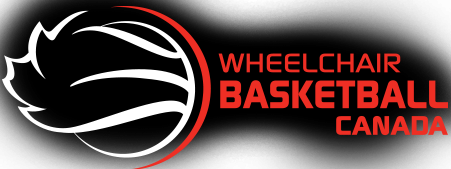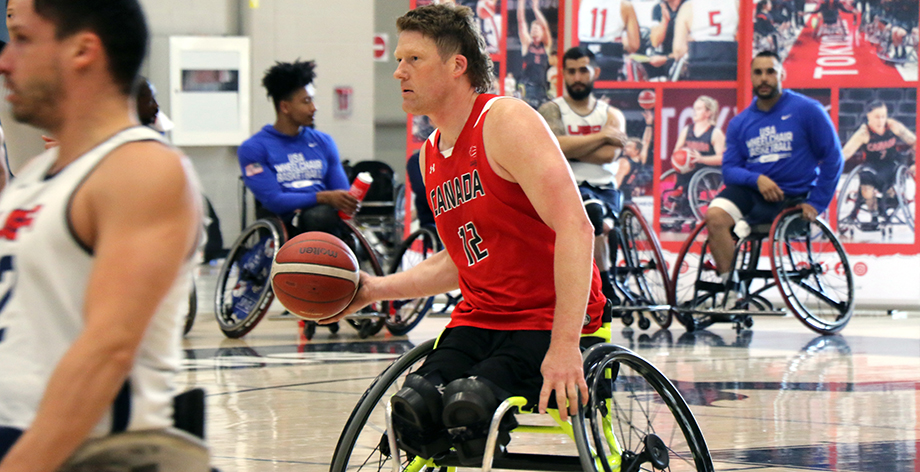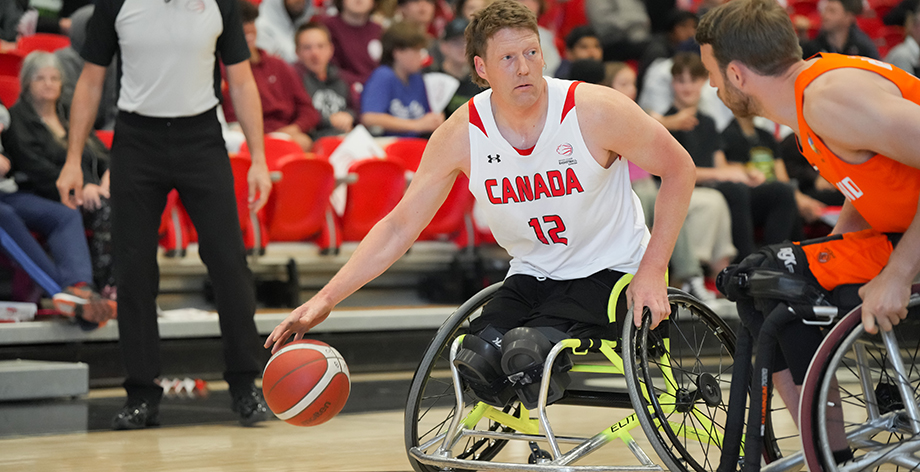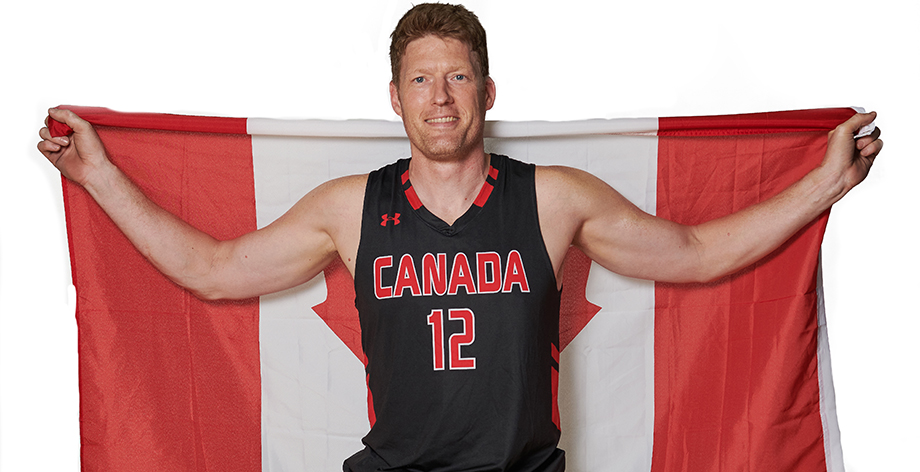Pat talks about his journey from growing up in Fergus and his accident to his journey in wheelchair basketball and his music career in this month’s Athlete Spotlight presented by Toyota
I was born in Edmonton but moved to Fergus, Ontario when I was three. My memories of Edmonton are more from visiting my dad’s side of the family every few years: we’d go to the water park at West Edmonton Mall.
Fergus was a small town of maybe 10,000 people when I was growing up, and I’m one of seven kids in the family, so we were very much free-range kids: outside all day, be back home by supper kind of thing. So we had a lot of freedom to bike, run around, and climb trees. It was a lovely place to grow up.
I’m the fifth among my siblings – the last born in Edmonton. I was the original baby in the family, so I developed some of those personality traits as the baby of the family, but then along came my brother and sister a few years later.
With seven of us, something was always going on, someone to play with and hang out with. There was never too much attention paid to you, for better or worse. Sometimes you were able to get away with a little bit more.
I had two older brothers, two and four years older than me, so I always hung with them, tracked with them, and played sports. It got a little feisty, but I got hurt when I was nine, so before we got too into that. I’m sure if we played more sports as teenagers, it would’ve gotten more competitive.
In the winter, the sport was hockey, ball hockey, road hockey and in the summertime, we played a lot of baseball. I played organized hockey from the age of five to nine. Like probably half the kids in my class, I thought I could one day play in the NHL, but at the same time, I never really had that dream. It didn’t seem like a realistic dream for someone from our town. It didn’t seem like a realistic path, but we were all obsessed with being great hockey players – trying to be Wayne Gretzky.
I was an Oilers fan – I envisioned myself as Mark Messier flying down the left wing with a pretty nice snapshot. Growing up in the 80s, even though we were in Ontario, I remember watching a lot of first periods of Oilers games, falling asleep and getting carried to my bed.
The accident
I was at the wrong place at the wrong time and got hit by a car and was saved by the paramedics that got there. This woman, who happened to be steps away when the accident happened, came and held my hand and stayed with me until the paramedics arrived. They rushed me to the local hospital in Fergus and then to SickKids Hospital in Toronto. I woke up a few days later with no legs.
A few days after the accident, I turned 10; it was the best birthday I ever had – I got a Nintendo, I got a Walkman, and Batman gear from head to toe; it was awesome.
Following the accident, it was a year of healing and a total loss of independence. I was sitting in a hospital chair with somebody pushing me around all the time. It was very slow to get back my strength and independence. It was a year before I got my own chair, it wasn’t a sport chair, but it was a huge leap forward from the hospital chair.
That’s when my journey towards being independent and sports started.
Introduction to adaptive sports
A year after my accident, I was invited to a wheelchair sports camp in the Kitchener-Waterloo area run by the Twin City Spinners. I was introduced to a few different activities and sports. I spent some time in the pool, then on the track, but really, we were there to play basketball.
A couple of the guys at the camp were on Canada’s 1988 Paralympic team that went to Korea. Right off the bat hearing stories about playing for Team Canada planted the seed in my imagination. I was sort of hooked from that first weekend. At the same time, I had a long way to go. At the time, if I heaved the ball with two hands as hard as possible, I could just barely clear the front of the rim, but it was on my radar.
My attention started to shift away from hockey and towards Michael Jordan and the NBA. This was the early 90s, Jordan’s first title – I caught that wave like millions of other people around the world and became obsessed with basketball and the NBA, and that sort of fed my passion for wheelchair basketball.
I was introduced to wheelchair basketball in 1991 and made the Junior National team in 1997. From 11 to 17, I accelerated fairly quickly, partly because there weren’t as many junior opportunities. I had to jump in with the adults from a young age. I had to jump in with the adults when I was 13 or 14, which accelerated my development.
At the same time, I was sort of ready for it. I was tall and long and athletic and could keep up. I had a lot to learn, of course. I had to get stronger and tougher.
Playing against adults and able-bodied athletes helped my development. There were a few junior opportunities and then there was the chance to jump in with the adults and they both helped my growth. One challenged me more physically; the other one taught me to take responsibility and to be a leader.
As a teenager, I got to go down to the States and play against some of the greats. I had my eyes on them from an early age: who were the best players, what’s their story, what can they do. I used to seek them out at tournaments and watch and play. Right away, I was paying attention. I wanted to know who the guys were that I was supposed to watch, and I’d watch them.
Realizing potential in the game
One touch point for me was Canada Games in 1995 because that was maybe the first time I played with and against all the best players in my generation and older such as Joey Johnson, Jamie Borisoff, and Richard Peter, who would go on to play on the National Team. I was only 15 at the time, and some athletes were already 25, so I was a boy amongst men, and I held my own. That’s when I realized both that I had it and I also realized what a good position Canada was in going forward – how much talent there was around the country.
I think 1997 was that big pivotal year for me because we won World Juniors; I started college at Illinois with Mike Frogley, and that spring, I also made the Senior Men’s National Team for the first time.
When I made the National Team for the first time in 97, I was somewhat surprised. It happened slightly faster than I thought it would. But looking back on it, there was turnover; there was a new wave coming through. It was Frog’s first go around as National Team coach, so we were moving forward with a new generation of players, and I was part of that.
Attending the University of Illinois
I had the choice of a couple of colleges. I just wanted to go to a big school with a rich history in wheelchair basketball and disability advocacy – it felt like being a part of a really important legacy. Frog sat me down and sort of explained to me the different opportunities that I had like an impartial recruiter and I ended up picking Illinois without knowing he was moving there to coach as well.
My first year at Illinois ended up being his first year at Illinois, and it was also his first year as coach of the National Team, so it was the start of a new era with the National Team.
Illinois was awesome. It’s something I encourage athletes to consider. Those four or five years you get to spend on campus has it’s own sort of arc: beginning, middle and end that can set a great foundation for the rest of your life in the sport, whatever that happens to be. It was a really special time.
I studied a bit of everything, mostly basketball and left following my fifth year without my degree, unfortunately – I got that 10 years later in New York. I ended up with a Bachelor of Arts Degree in Music.
Career in Music
I grew up in a campfire, singalong kind of family – folk songs: Anne Murray and John Denver, that kind of stuff. Music was a big part of our church. There was a lot of singing at our church. At church, we sang songs; at home, we sang songs; at school, we sang a lot of songs. So there was a lot of singing in my childhood growing up.
At some point, I’d sit on my uncle’s knee, and he would play the left hand of the guitar, and I’d strum – that’s my first memory around a campfire of playing the guitar. I started playing piano at six or seven, learning to accompany myself to sing songs. I just wanted to sing. These days I play guitar and piano.
My wife, Anna, and I met through music. We were at a mutual friend’s wedding. She was playing the piano during the service, and I was singing during the service – my brother and I had a band, and we were playing at the party.
All weekend, Anna and I were fighting over the piano and flirting. I followed her to New York, where she studied music and did her master’s in composition.
We sang at some weddings together. Then she put out some new music, and I just wanted to help and work alongside her, so I played in her band for a while – the Anna Paddock Band – I played bass. From there, we started writing songs together, which became a duo – kind of organically. She wrote songs and performed, I wrote songs and performed – at some point, it was inevitable we’d put our heads together and make a duo.
We want to make at least one more album together. Anna’s released music recently about our daughter that she wrote before, during and after the experience of being in the hospital with her when she was first born.
Right now, Anna Paddock is back on the scene. It’s very personal, and I think it’s amazing. I think it’s the strongest stuff I’ve ever heard in terms of the music we’ve made together. It was a very hard time for us as a family but also a very hopeful time.
First Paralympic Games
The 2000 team in Sydney was the most fun team on and off the court that I’ve ever been a part of – it was just a crazy cast of characters. Everyone was firing on all cylinders. I remember being underneath the stadium warming up before the gold medal game and feeling the stadium shake while the bronze medal game was going on.
I remember coming onto the court, being too jazzed up, and flying around like a chicken with my head cut off. The Netherlands got up on us 6-0 right off the bat, and then Joey wrestled it back, got us on better footing and then I had a better game from there.
I remember being overly excited.
An ambassador for wheelchair basketball
Giving back to the game and being an ambassador for the game is what has motivated me for the past 10 years. Before that, I wore it heavily; it felt like a burden I didn’t want. In the last 10 years, it’s been more of a fun motivating factor, and that’s manifested itself in a few ways.
I want to compete hard because I know that in the past, people have wanted to come through Canada, wanted to go through me and measure themselves against us and me. So I take that challenge seriously as a sort of responsibility. Not just, ‘Oh we got ours, it’s your turn now’. No, make them come get it. When I was younger, I wanted to go up against the guys ahead of me and the legends – I wanted them to take me seriously.
At this point in my life, I feel like my responsibility of giving back to the game is more like playing and not only playing, competing and training but putting some stuff out there on social media, some breadcrumbs at least, that’s more show than tell but it’s just like this is what it looks like when I do it, and here’s a little bit how I train.
I’m not sure who it is, but I try to inspire and motivate people inside and outside the game to enjoy it more to get more out of it.
Advice for a new athlete
I encourage people not to skip the step of just being creative. Jump in someone else’s chair. If you’re a big guy, jump in a little chair; if you’re a little guy, jump in a big chair. Try these wheels, try those wheels, and see what you can do and what you can’t do. Try a strap here and a strap there. You can certainly take from best practices and advice you hear from people, but at the end of the day, it’s your journey.
I was lucky to have tried many different things and found what works for me. That feeling you get when you feel at one with your chair is so special. I don’t think you can get fast-track that. It comes with time, and it comes with playing around with all the different options because there are a lot of ways you can slice it.
“My Journey: Patrick Anderson,” co-written by Dhiren Mahiban





